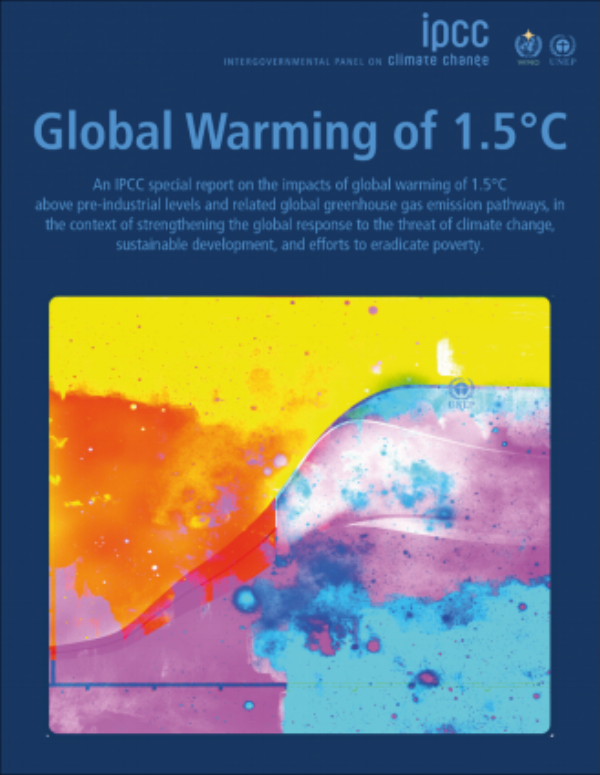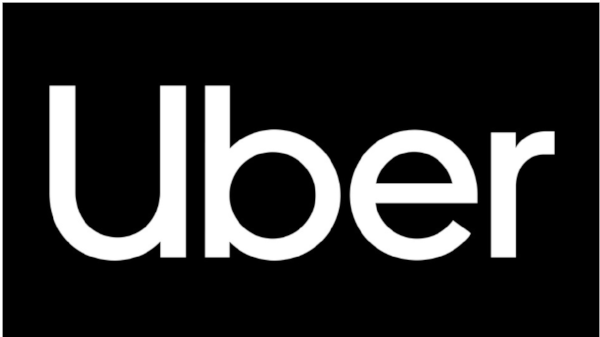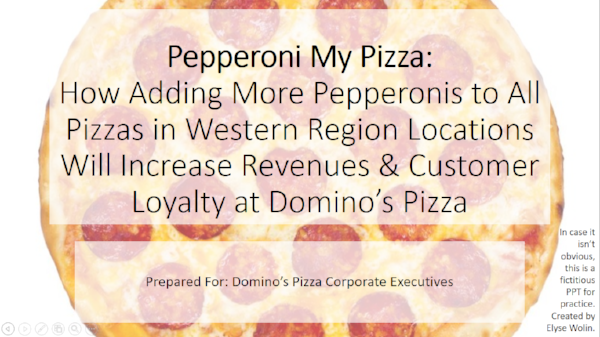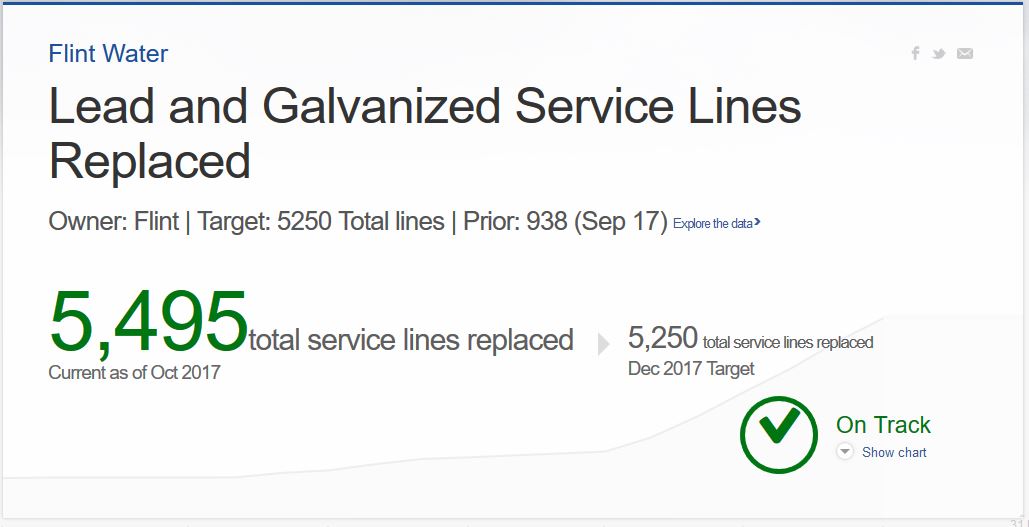Climate Change Report
If you weren’t already concerned about climate change, a new UN report may change your thinking. The extraordinary report, written by dozens of scientists from 40 countries who reviewed more than 6,000 studies, reveals a bleak picture for the Earth’s future. The introduction, titled “Chapter 1: Framing and Context” is 61 pages, and the rest of the report is a long, deep dive into the data.
The most significant conclusion is that global warming must be limited quickly. The authors write with great urgency that the Earth’s temperature has already increased and that further increases will create heatwaves, eliminate ice in the Arctic Ocean, melt massive ice sheets, devastate coral reefs, and produce intense storms. Further, global warming will result in more poor people: "Climate change is projected to be a poverty multiplier, which means that its impacts make the poor poorer and increase the total number of people living in poverty.”
The authors suggest limiting the planet's warming to 1.5 degrees Celsius (2.7 degrees Fahrenheit) above pre-Industrial Revolution temperatures to avoid catastrophic results. They also warn that this requires "rapid, far-reaching, and unprecedented changes in all aspects of society."
A New York Times article, “Dire Climate Warning Lands With a Thud on Trump’s Desk,” describes President Trump’s disinterest in the report findings. Similarly, a text search on today’s Wall Street Journal home page finds an article about Exxon but nothing about the UN report.
Discussion:
Analyze the report audience, objectives, writing style, and organization. Which business writing principles are followed?
What improvements would you make to improve report readability?
What are your views about climate change? What evidence leads to your conclusions?
Uber Rebranding
In the past, Uber had been criticized for questionable business practices and ethics, and the company is still trying a turnaround. They hired Dara Khosrowshahi in August 2017 and distanced themselves from founder Travis Kalanick.
Now Uber has a new branding initiative. The marketing campaign, "Doors Are Always Opening,” is credited to 72andSunny, a Los Angeles firm.
A video shows significant events in people’s lives—giving birth, meeting your partner’s parents—and how people rely on Uber.
Paulie Dery, Uber's executive creative director, describes the objectives as follows:
"What we are really saying is opportunity happens everywhere if you are willing to move. You know what happens when you sit still? Nothing. And I think that is a great Uber story. We've always had a certain amount of hustle and belief that movement creates something better for everybody, and that's really at the center of the idea."
The company also has a new logo: simply the company name, which insiders hope will become a verb, like Google.
Discussion:
Uber’s previous campaign was called “Moving Forward” to distinguish the company’s controversial past with its future. How well do you think this new campaign will accomplish its objectives?
What’s your view of the new logo, simply the company name?
Disneyland Employees Speak Out
Disney employees are on screen in a New York Times op-ed video, "I Work at the Happiest Place on Earth. Why Can’t I Pay My Rent?" A 30-year concierge and a cosmetologist are featured more prominently. One is currently living in her car, and another says, tearfully, that she has spent time in her car. Both say they love their jobs, but along with 75% of Disneyland employees, they can't afford to pay "basic expenses every month." Data comes from a questionnaire and report, "Working for the Mouse."
The argument is for Disney to pay a living wage, and the call is for citizens to vote for an Anaheim proposal that affects Disneyland employees and some local hotel workers. In the video, one claim is that real wages have declined because of inflation—what $15 per hour bought seven years ago isn't the same today.
Business leaders who are fighting the measure say that the increase would hurt jobs. One local Chamber of Commerce member argued, "We estimate 3-4,000 jobs lost over next year or two by companies having to absorb this new increased cost. They're going to reduce hours and reduce jobs."
Senator and former presidential candidate Bernie Sanders is also featured in the video. He is proposing a bill he calls "Stop BEZOS" to tax Amazon and other large companies for public assistance received by their employees. The idea is for companies with 500 or more employees to pay the government back for support paid to their employees who cannot survive on earned wages.
Discussion:
- How well does the video make the case for higher wages? Which are logical and which are emotional appeals? What evidence is presented?
- Assess the credibility of the questionnaire and report, "Working for the Mouse." From your assessment, what makes the report both credible and questionable? In what ways does the report reflect business communication standards, and in what ways does it fall short?
- Research the impact of raising wages on industry, for example, this Cornell report. What's your view of this argument? It's a complicated question because of different industries, locations, labor supply, rates, etc.
- In what ways do the employees featured in the video demonstrate courage? What risks did they take in appearing on screen?
SodaStream Acquisition Communications
Pepsi will acquire SodaStream, which makes sense given declining sales of sugary drinks and bottled water, and increasing sales of sparkling water.
As we might expect, the press release focuses on Pepsi's "growing water portfolio" and its goal of "reducing the amount of waste generated." Incoming CEO and President Ramon Laguarta emphasized the strategic match between the two companies:
"SodaStream is highly complementary and incremental to our business, adding to our growing water portfolio, while catalyzing our ability to offer personalized in-home beverage solutions around the world. From breakthrough innovations like Drinkfinity to beverage dispensing technologies like Spire for foodservice and Aquafina water stations for workplaces and colleges, PepsiCo is finding new ways to reach consumers beyond the bottle, and today's announcement is fully in line with that strategy."
A Wall Street Journal article included a clear, simple column chart showing the dramatic increase in seltzer water.
Discussion:
- What is not said in the press release? What, if anything else, should be included?
- Pepsi's former CEO was Indra Nooyi, one of the few women running Fortune 500 companies, just announced her departure after 12 years. How, if at all, do you think the acquisition timing is relevant?
- What visual design principles are illustrated in the column chart?
The Debate Over Quarterly Reporting
President Trump is asking the SEC to no longer require report quarterly earnings. Instead, companies would report results every six months.
This may be good news for those who believe that publishing frequent earnings reports encourage a short-term focus. The idea is that investors make rash decisions based on the results from only three months.
One downside of the change could be less transparency. The value of quarterly reports is that investors are more aware of what's happening. In addition, the process itself may be useful internally, as a former investment banker explains:
"What I see from the inside of the quarterly earnings cycle is that there’s actually a lot of discipline in it. That process of having to prepare it, release it, explain it and answer questions has real value.”
Also, not everyone agrees that eliminating the report will foster longer-term thinking. As a compromise, some are proposing that reports are still published, but that specific earnings-per-share guidance information isn't included.
Discussion:
- Describe the importance of transparency in financial reporting. How does this relate to accountability?
- What's your view of the proposal to eliminate quarterly reports? Do you see additional benefits or downsides than what is mentioned here?
- In his tweet, President Trump refers to making "business (jobs) even better." How do you see this as a result of his proposal?
CEO Activism
Weber Shandwick's third annual report explores CEO activism, which Brian Moynihan, CEO Bank of America, defines and supports:
“Our jobs as CEOs now include driving what we think is right. It’s not exactly political activism, but it is action on issues beyond business.”
The report found that almost half of Americans "believe CEO activism influences the decisions and actions of government," and almost half of consumers "would be more likely to buy from a company led by a CEO who speaks out on an issue they agree with." Millennials, particularly, prefer CEOs to speak out on issues, and CEOs with more social media accounts have better stock performance for their company.
A Wall Journal Street writer observes that leaders rarely make a business case for issues, even if their company would benefit. Instead, they are speaking to consumers directly to change hearts and minds.
Top issues for CEOs include training, equal pay and sexual harassment, and CEOs are avoiding gun control, nationalism, marijuana legalization, and abortion."
A Forbes article offers this advice for CEOs:
- Develop an authentic voice and quick actions
- Connect your customers with your activism efforts
- Align activism efforts with a company’s mission
- Be willing to act against your own self-interest
Discussion:
- What are the risks and rewards of activism to a CEO and to the company? How does integrity factor in?
- What examples have you seen of CEOs speaking out? How do you assess the situations? How did you feel about the gestures?
- Read the Weber PPT deck. What principles of business report writing are followed, and what could be improved?
Narrative Alternatives to PPT at Amazon and Google
In his annual letter, Amazon CEO Jeff Bezos wrote that he has banned PPT:
"We don’t do PowerPoint (or any other slide-oriented) presentations at Amazon. Instead, we write narratively structured six-page memos. We silently read one at the beginning of each meeting in a kind of 'study hall.'"
Nancy Duarte describes the value of a narrative or storytelling approach: "storytelling in presentations is a powerful way to grab attention, hold attention, and to change beliefs." She gives examples from our favorite books and movies, which build suspense over time. Stories are also a good way to inspire empathy and other emotional reactions. This is difficult to achieve with traditional PowerPoint bullets.
A Harvard Business Review article, "Structure Your Presentation Like a Story," provides more guidance and summarizes the approach with a graphic:
For Bezos, the narrative style means that points are connected and organized in a logical sequence with some resolution, conclusion, or outcome. GeekWire created this six-page memo in Amazon's style as an example.
At Google, CEO Sundar Pichai also emphasizes storytelling with pictures:
"Since stories are best told with pictures, bullet points and text-heavy slides are increasingly avoided at Google."
Both executives are warning against the type of communication that is overly concise and missing context, connections, and cohesiveness. A ZDNet article summarizes some of the issues with PowerPoint and describes the now-infamous role of PPT in a U.S. disaster:
"'[B]ulletized' thinking contributed to the Challenger disaster, where 7 crew members died and a multi-billion dollar craft destroyed due to an O-ring failure. The big problem was that NASA management wasn't really listening to the engineers—and breaking issues up into bullets helped them do that."
Pichai's design approach aligns with PPT trends over the past few years. We're seeing much less text, fewer bullets, and more images, and this style follows the evolution of web design. On websites, we see many more background videos and photos and not much text, particularly on consumer websites.
Discussion:
- What are the advantages and downsides to the narrative memo? For what types of situations do you think this approach would work well? For what situations might PPT be a better choice?
- For practice, try to convert this terrible PPT presentation to one with less text and more meaningful images. Clean up the design, add charts to help your audience visualize data, and of course, correct the grammar.
Bias in Online Courses
A Stanford University study found biases in how instructors interact with students in online courses. In a review of 124 Massive Open Online Courses (MOOCs) in a variety of subjects, researchers found that responses to comments vary by students' race and gender:
Each comment was randomly assigned a student name connoting a specific race and gender. We find that instructors are 94% more likely to respond to forum posts by White male students. In contrast, we do not find general evidence of biases in student responses. However, we do find that comments placed by White females are more likely to receive a response from White female peers.
The study is significant because it identifies teachers' potential responsibility for different student learning outcomes. In other words, it's difficult to isolate why teachers respond differently to students because the students may, for example, be less prepared or have less ability. But in this study, the issue is clearly isolated: teachers tend to favor students based on race and gender, which were randomly assigned by way of fictitious names.
Discussion:
- How well do these results match your own experience as a student?
- What are the implications of this study for instructors?
- What potential flaws or issues do you identify with this study?
Is Blankfein Leaving Goldman?
It's big news on Wall Street: the 12-year CEO of Goldman Sachs is leaving the company. But Lloyd Blankfein and other Goldman executives say they were surprised to read the Wall Street Journal report.
CNBC's Jim Cramer said the news made sense because Goldman has two co-presidents who are vying for the position: "Blankfein is deeply committed to letting a newer generation" lead.
Blankfein tackled some tough times at the investment bank. The firm managed well through the Great Recession despite criticism for misleading customers, for which Goldman paid $550 million to the SEC as a settlement. In 2009, Blankfein faced criticism when he, perhaps jokingly, told a reporter Goldman was "just doing God's work." He was positioning the firm as having a "social purpose." Finally, in 2012, a Goldman executive wrote a scathing report about the company in a New York Times opinion piece, "Why I Am Leaving Goldman Sachs."
For now, we don't know how true the WSJ report is.
Discussion:
- The Wall Street Journal report is very clear, although it doesn't identify sources, but that is typical. How do news reports like this happen? Who is responsible if it is a mistake?
- How well did Blankfein handle the situation? What, if anything, should Goldman communicate as a company at this point?
Facebook Under Fire for Russian Interference
Facebook is facing more criticism following detailed reports of how the Russian government infiltrated U.S. social media platforms during the 2016 election. The report cites Facebook as the target for Russian bots far more than any other social media site.
Since the Florida school shooting last week, we see evidence of Russian bots weighing in on gun control. Experts say these efforts are to divide the American people on political issues and are "casting public doubt on institutions such as the police or the media."
Facebook is taking action, but it's been slow, and experts wonder how much the company can do at this point. A Wired article details Facebook's journey to accountability, with much time spent in denial. Now, Facebook promises to verify accounts for election ads, but critics say it won't be enough.
In a report, Facebookers point to inherent problems with the platform:
“The central problem of disinformation corrupting American political culture is not Russian spies or a particular social media platform,” they write. “The central problem is that the entire industry is built to leverage sophisticated technology to aggregate user attention and sell advertising.
“There is an alignment of interests between advertisers and the platforms. And disinformation operators are typically indistinguishable from any other advertiser. Any viable policy solutions must start here.”
Discussion:
- What's your view of the situation and Facebook's responsibility. Is the company doing enough?
- How could Facebook re-envision its platform to avoid the problem of infiltrators on the site?
- Read the report, Digital Deceit. What business communication principles are followed, and how could the report be improved?
Adam Rippon Demonstrates Authenticity and Questions Pence
U.S. Olympic figure skater Adam Rippon has been public about being gay and having a history of an eating disorder. Rippon says he felt pressure to fit a particularly body image and sometimes starved himself to achieve it.
In January, Rippon said he would refuse a meeting with Vice President Mike Pence because of his support of "conversion" therapies, attempts to change someone's sexual orientation or gender identity. Pence denied the claim and expressed support for all athletes:
“The accusation is totally false with no basis in fact," Alyssa Farah, Pence's press secretary, stated. "But despite these misinformed claims, the Vice President will be enthusiastically supporting all the U.S. athletes competing next month in Pyeongchang.”
However, an NBC article identifies a message on Pence's website that supports Rippon's claim:
Under the headline "Strengthening the American Family" and just below his stated opposition to same-sex marriage and anti-discrimination laws protecting "homosexuals," Pence's platform advocates that resources "be directed toward those institutions which provide assistance to those seeking to change their sexual behavior."
Discussion:
- What's your view of Rippon's statement?
- Explain VP Pence's statement given his documented platform? How do you reconcile the claims?
- In what ways does Rippon demonstrate authenticity?
Missed Opportunity for a Graphic
A Business Insider article compares state income tax rates in a list of pictures and data points. The beginning of the article conveys the main point: how much you pay depends on where you live. As you might expect, rates are highest in California.
The site offers the list of city photographs and numbers on one page or as a sequence of slides. Both versions emphasize pretty pictures but make it difficult to compare data from different states.
Also, the range for each state is so broad that the information makes meaningful comparisons difficult.
Discussion:
- Should pictures get most of the attention? Why or why not?
- What are better ways for Business Insider to represent this information graphically?
Misleading Headlines About the Market Dip
The stock market took a dive this week, but headlines are making it sound worse than it is. Here are three examples:
- FoxNews: "Investors hope for reversal after biggest stock market dip of all time"
- The Guardian: "Australian and Asian stock markets slide after Dow suffers biggest one-day points fall – as it happened"
- CNBC: "Dow's nearly 1,600-point plunge marks its biggest one-day point drop ever"
The headlines are technically correct that a nearly 1,600 point decline is the largest in U.S. history, but looking at only the point value is misleading. A percentage drop would be a better indication of the effect. This table represents the largest daily stock market losses. The display below is sorted by point loss; the table at right is sorted by percentage. You can see that 2018-02-05 falls in rank when we look at the percentage.
Also, the stock market has had incredible gains this past year, so the 26,000+ value could be viewed as an anomaly, and most analysts didn't believe those gains were sustainable.
Discussion:
- What are the ethical considerations for news agencies publishing these headlines?
- What might be a more appropriate headline for the news?
Perhaps this one-year chart helps keep the loss in perspective. It includes today's rebound of 567 points.
Critics Say Bank of America Fees Hurt People with Less Income
Customers want Bank of America to stop charging fees for accounts with low balances. The company ended its free checking account and will start charging $12 per month.
Critics say the decision disproportionately hurts low-income consumers. The president of a financial advocacy organization explains the consequences:
“The debate over Bank of America’s accounts and fees points to a larger economic justice issue — people with less income pay more to get cash, make payments, and conduct their business. Without access to safe and affordable bank accounts, low-income consumers often turn to costly alternative financial services, such as currency exchanges or check-cashers. The bottom line is: the most financially vulnerable need more and better options to transact their business and participate in the financial mainstream.”
Few big banks still have free checking options because they are expensive to maintain. Banks prefer to move customers to digital solutions. But many low-income people don't have smartphones or reliable internet access. More than 287,000 people have signed a Change.org petition.
Discussion:
- What's your view? Is Bank of America being unfair, or is this just a good business decision?
- What is the value of a petition? On what principles of persuasion does a petition rely?
- How well does the image on the petition site, shown here, work? The emotional appeal is obvious. Does it help or detract from the message?
Controversy About Apple's "What's a Computer?" Ad
Apple's upbeat "What's a Computer?" commercial isn't winning a lot of fans. The long version on YouTube shows a child using an iPad to video chat with a friend, send a picture, type a paper, take a picture, pay for food, draw, and read a comic book. When asked by a woman we assume is the mother, "What you doing on your computer?," the child responds, "What's a computer?"
Cute? Many people think not. According to a Business Insider article, some find the ad "infuriating."
Discussion:
- What did Apple hope to accomplish with this ad? To what extent did the company achieve its purpose?
- We might say this is a lesson in humility for Apple. How do you see it?
- Why do you think people are so angry about it?
Fudging Numbers to Make the NYC Subway Look Better
New York Governor Andrew Cuomo's staff is criticized for inflating power-related issues as the cause of subway failures. Transit officials apparently broadened the definition of power issues so that Con Edison, the local utility company, would be given more of the blame when subways aren't running. Emails were discovered before Governor Cuomo was scheduled to give a breakfast talk, during which he said the number of outages due to power failures was 32,000 in the past year, while the actual number was more like 8,000:
When you we're a kid and you had a train set you had to plug it in. We have to plug in the MTA every morning and the MTA does not control the power supply to the MTA. Over the last 12 months, 32,000 delays because of power related issues and they can either be a power surge or power shortage, but 32,000 delays. The MTA doesn't control the power, Con Edison does. Con Edison has a duty to safely, prudently and effectively provide electricity that powers the subway system. Con Ed is a regulated utility under the state's Public Service Commission. April 21 after the last outage I ordered an investigation of the Con Ed infrastructure after a particularly devastating failure. The investigation goes on but PSC has already found that Con Ed must make immediate and significant improvements in this system because the reliability depends on it.
The chief of staff of the transit agency wrote in an email that they were "looking for a higher delay number for power." The expanded definition was that ConEd "caused or contributed to" delays. One example is when a person jumps or falls onto the tracks; ConEd will shut off the power for safety. With the new definition, the delay becomes ConEd's fault.
Discussion:
- We certainly can use numbers to our advantage when trying to persuade others. How does this situation "cross a line"?
- What should Governor Cuomo do now? What, if any, statement would be appropriate?
- Do you remember "Bridegate" in New Jersey? How is this situation similar or different?
How Well Can People Rate News "Credibility"?
Facebook has a solution to its fake-news problem: allow users to assess stories' credibility and trustworthiness. Stories rated more highly will get higher ranks in newsfeeds.
In a Facebook post, Mark Zuckerberg explained the plan:
Here's how this will work. As part of our ongoing quality surveys, we will now ask people whether they're familiar with a news source and, if so, whether they trust that source. The idea is that some news organizations are only trusted by their readers or watchers, and others are broadly trusted across society even by those who don't follow them directly. (We eliminate from the sample those who aren't familiar with a source, so the output is a ratio of those who trust the source to those who are familiar with it.)
Critics call the move "time-wasting stupidity":
So people get to rate the credibility of news. Based on what?
The answer is easy. People will believe any story that presents a view they want to hear.
Is there a point to this?
Sure, Facebook wants people to waste still more time on Facebook debating what is or isn't fake new [sic].
Rating news stores based on credibility is time-wasting silliness.
That's precisely why Facebook introduced the feature. Don't fall for it.
Discussion:
- Business communicators may have some questions as well. What principles of research and source credibility are in question here? What do we know about how people interact on social media that may jeopardize Facebook's plan?
- On the other hand, what is positive about the plan?
- On balance, are you more optimistic or pessimistic about Facebook's ability to reduce fake news?
- Assess Zuckerberg's writing skills in the full post. How well does he organize the message and communicate his ideas?
- Is this a good or a weak example of Facebook's accountability?
More Water Issues for Flint and No Response
Flint, Michigan, is in the news again for poor water quality. After findings of too much lead in drinking water, the city was under an agreement to replace faulty pipes, provide water filters, and report on progress. However, advocacy groups say the city is already falling short of the terms set in March of this year. According to the NPR article, "City and state officials did not immediately respond to the allegations."
Although some water service lines have been replaced, the number is not keeping pace with the agreement. Critics say that "all of the City's status reports have been late, incomplete, inaccurate, or a combination thereof."
The government has its own messaging on a website from the mayor's office. According to the data and chart, the city is "on track."
Discussion:
- Read the criticism and the mayor's report. What are the discrepancies, and how do you account for them?
- What else, if anything, should the city do to communicate its progress and demonstrate accountability?
More Than You Want to Know About Fonts
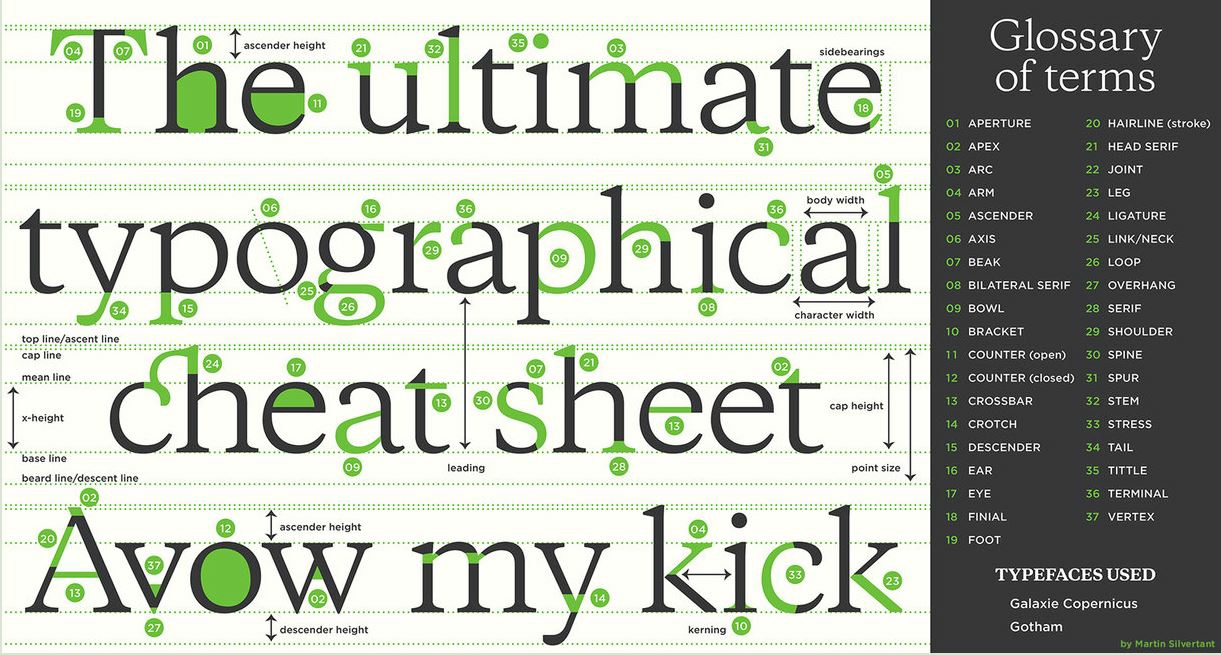 This may be more than mere mortals and business writers need to know, but typography is interesting. We often use default fonts that Microsoft chooses for us, but this graphic shows the many variables among them.
This may be more than mere mortals and business writers need to know, but typography is interesting. We often use default fonts that Microsoft chooses for us, but this graphic shows the many variables among them.
The most commonly known term is probably serif, shown here as 28 on the third row. The letter h in this font has small lines at the bottom. These "legs" are missing in sans-serif fonts, which means they are "without" them. Serif fonts include Times New Roman, Garamond, and Georgia (this one), while standard sans-serif fonts are Arial and Calibri.
Fonts can reflect a company or style of writing. Disney and others have their own special fonts, which could be fun for headings but may be too much for body text. People are long tired of Comic Sans, which is cute for K-12 documents but little else. Serif fonts tend to be more formal looking, while sans-serif are more informal.
Although presenters get creative in choosing fonts, a common problem is using a font that isn't installed on another computer. For example, you create a PPT file on one computer, but when you open the file on another and the font isn't available, the new computer will choose a default. This messes up alignment because the two fonts may be different sizes. More specifically, from the glossary at right, the character width, ascender height, or x-height may be different.
Some fonts are wholly unreadable and should be avoided entirely. Impact, for example, should be used sparingly for large headings only.
Discussion:
- Do you have a favorite font? What do you like about it?
- Have you tried different fonts for different purposes? How did it turn out?
More Criticism for Starbucks' Coffee Cup
 Starbucks' coffee cup isn't spared another year of criticism. In 2015, Donald Trump, before he was president, said the company participated in a "War on Christmas" because its cup was a solid red color with no Christmas symbols.
Starbucks' coffee cup isn't spared another year of criticism. In 2015, Donald Trump, before he was president, said the company participated in a "War on Christmas" because its cup was a solid red color with no Christmas symbols.
This year, the company is accused of having a "gay agenda." At one point during the promotional video, two women have their hands on a cup and are looking at each other. A company spokesperson said, "This year's hand-drawn cup features scenes of celebrating with loved ones-whoever they may be. We intentionally designed the cup so our customers can interpret it in their own way, adding their own color and illustrations."
A compilation of Starbucks Christmas coffee cups shows an interesting history. The first holiday cups, in 1997, were in four colors, none of which were red. Also, although this year's cup is identified as "not red," many of the drawings are red.
Starbucks is no stranger to controversy. During the political firestorm earlier this year, CEO Howard Schultz promised to hire 10,000 refugees by 2022.
Discussion:
- How do you interpret the coffee cup? What does it mean to you? Do you think Starbucks is trying to promote a "gay agenda"?
- This may be another example of "brand activism." Should Starbucks stay out of the fray or take a stand on some issues? What are the advantages and downsides of each approach?

